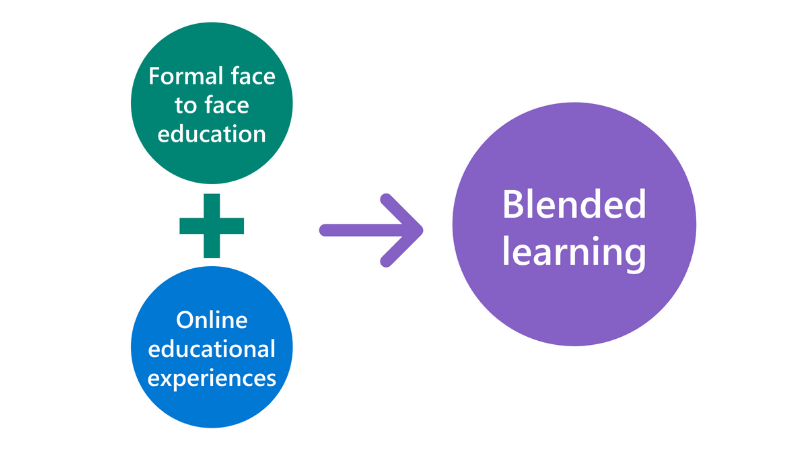Define blended learning
You might be thinking – wait a minute, hasn't blended learning been around for a while? That's true. Teachers have been using blended learning for decades, but its implementation has faced challenges for many reasons.
Recently, however, we have seen tremendous growth in both access to technology and interest in crafting technologically integrated learning opportunities. This module addresses building capacity for teachers who find themselves looking to increase engaging, individualized learning experiences for their students by using technology to increase teacher-student interaction in class.
Blended learning is a pedagogical model that encompasses several styles of student-centered teaching and learning with integrated technology. The primary commitment of blended learning is for students to spend part of their learning time using digital tools, and part of their learning time in traditional face-to-face mode. Blended learning is designed to allow the teacher to craft the learning time with their students that promotes their students' control over the time, place, and pace of their learning.
It seems important to also specify what blended learning isn't: It shouldn't be confused with remote learning, or hybrid (partial on campus/partial remote) models. While each of these learning models may incorporate blended learning, they aren't themselves by definition blended learning environments.
There are multiple models of blended learning, including:
- Four rotation models: station rotation, lab rotation, flipped classroom, and individual rotation
- Flex model
- A la carte model
- Enriched virtual model
Choosing a model depends on technology access, scheduling needs, and administrative goals. However, there's a model to adapt for any content area and developmental level.
